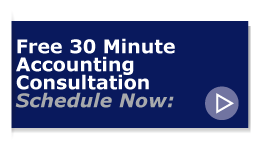
Jack Welch, former chairman and CEO of General Electric once said, "Number one: cash is king." You could say this is even more true for a small business. Cash flow keeps your business healthy and strong, able to withstand lean months and accelerate during busy ones.
There are different ways to measure cash flow. Each has its strengths and weaknesses, depending on the nature of your business and your operational goals. Here are six ways your outsourced accounting and bookkeeping services should consider.
1. Free Cash Flow
Free cash flow (FCF) is one of the most common ways of measuring cash flow. This metric tracks the amount of cash you have left over after capital expenditure items like equipment and mortgage payments. To determine your free cash flow number, you need to examine both your capital expenditures (CAPEX) and operating cash flow.
Operating cash flow is also known in some quarters as "net cash from operations." You may see capital expenditures under the line item "plant, property and equipment." By subtracting capital expenditures from operating cash flow, you will come up with your free cash flow. Free cash flow is important because it is money available to build your business, expand product offerings and undertake other activities that increase your company's long-term value.
2. Cash Flow From Operations
Cash flow from operations is one of the better indicators of your firm's overall financial condition. The term "operations" means your core business activities. For example, the operations for Louisville Slugger is making baseball bats. The operations for Warner Music Group is producing and distributing the music of its roster of artists. Cash flow from operations is a useful metric that shows how much cash comes in and goes out from your core business functions.
This is cash flow before you make any investments or finance anything. If your cash flow is thin, it means you might have to consider outside financing to pay bills. Some business owners like to look at cash flow from operations rather than net income — they feel that if net income is a lot higher than cash flow from operations, it indicates earnings quality is low.
3. Cash Flow From Financing Activities
Cash flow from financing activities (CFF) shows your company's financial condition by illustrating how you raise capital and repay investors. These activities include things such as taking on new loans, paying dividends and issuing additional stock.
For example, if you consistently take on new debt to handle temporary shortages of cash, it could be an indicator you are heading toward some financial problems in the near future. CFF tells you what percentage of cash is a result of financing rather than revenue from operations. It also helps you figure out if you are ready for expansion. Positive cash flow might indicate that you are putting together the necessary finances for targeted growth.
4. Discounted Cash Flow
Discounted cash flow (DCF) looks at future cash flow estimates versus the cost of capital. It helps you determine the value of a potential investment. You take free cash flow estimates and discount them to determine a present value projection. Essentially you are adjusting cash flows in the future for the time value. Although it has been around for hundreds of years, it became popular in the 1980s and following decades.
Discounted cash flow is a metric that is often used when one firm is contemplating buying another. It is a relatively simple calculation if used with caution. You can figure out the numbers on a spreadsheet, but the decision making behind the numbers is the most important factor. Some experts warn that the simplicity of the valuation leads some business owners to underestimate the amount of time needed to complete the operation the valuation is used for in the first place.
5. Cash Flow From Investments
Your statement of cash flows has three sections: cash flow from financing, cash flow from operations and cash flow from investments. Cash flow from operations looks at the cash brought in and spent from core operations. Cash flow from investments includes when you buy or sell equipment, real estate or securities such as stocks and bonds. It also includes when you make loans to other firms or separate entities.
When you invest in an asset or security, it is considered a "cash out" transaction. You are spending funds in the near future with the anticipation of long-term gains from better equipment or higher return on purchased securities. In other words, if you have lots of cash flow but low earnings output, it may be the result of using cash to invest for future growth. On the other hand, when you sell stock or assets, they are considered "cash in" transactions. This activity is also reflected in the cash flow from inventory statement.
6. Levered Cash Flow
Levered cash flow (LCF) is the free cash flow that you have after taking care of your debts. It tells you how many funds are available for investment and distribution. Determining levered cash flow begins with figuring out unlevered cash flow and then subtracting outstanding remittances including debt interest payments. For these reasons, levered cash flow is a good indicator of your credit record and of your ability to handle debts and effectively manage company funds.
Managing Cash Flow
The U.S. Small Business Administration says that managing cash flow is essential for effective stewardship of your funds and avoiding potential obstacles in the future. Review these six cash flow methods with your internal team or outsourced controller services to determine which one best fits your business needs and your company's operational style.
Need help getting your bookkeeping to help you make informed decisions? Our team can help.














